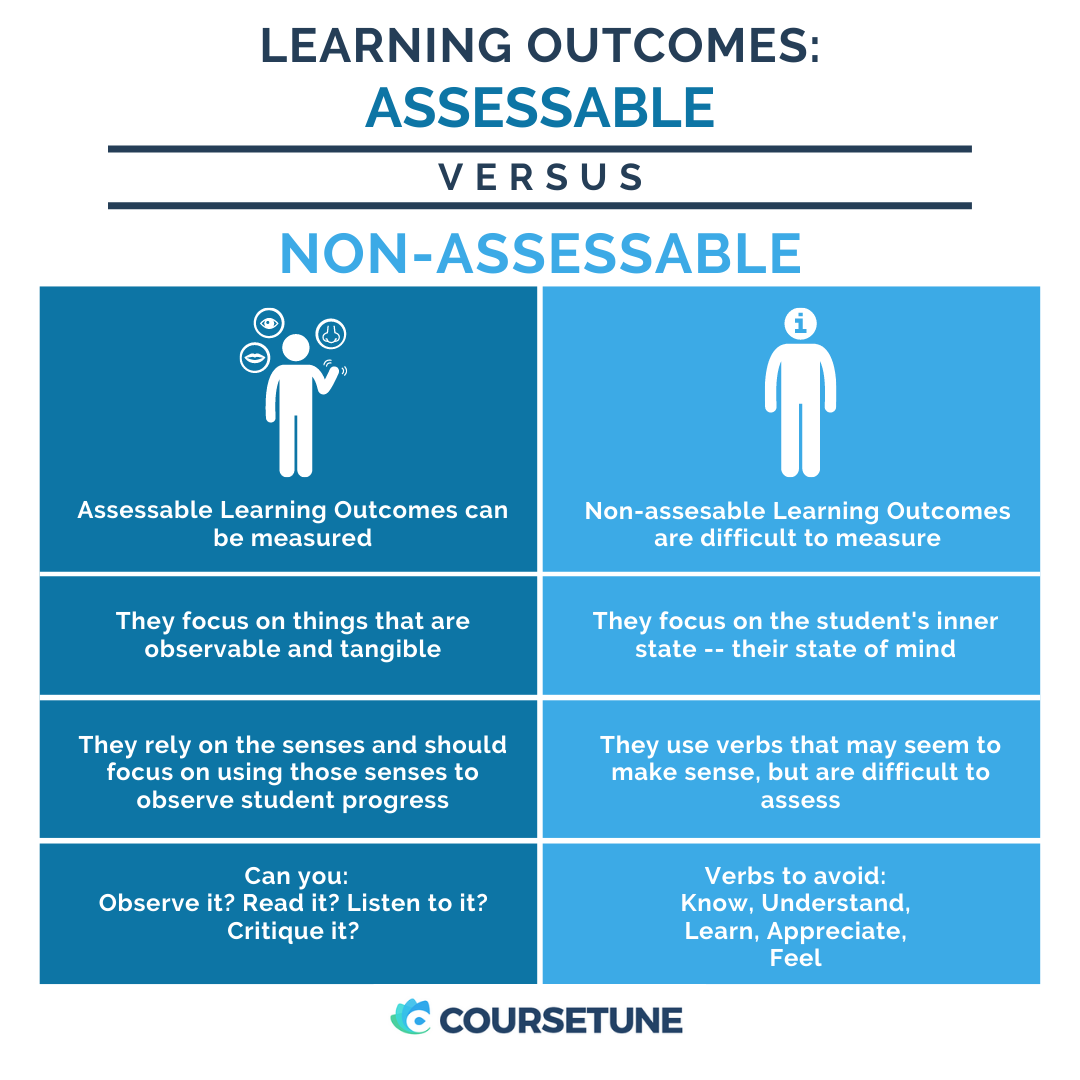
“Begin with the end in mind.” That’s a familiar saying, but what does it have to do with curriculum design? Well, when designing a curriculum, learning outcomes are the place to start. They should form the foundation of curriculum design.
Once we’ve defined a learning outcome, everything else about the course should flow. But just naming an outcome isn’t enough. It must be an assessable outcome. So, what is a learning outcome and how do we create an assessable one?
What is a Learning Outcome?
An outcome is what a student should be able to do at the end of the course or curriculum.
Taking it one step further, a high-value outcome is what the student needs to be able to do in the career they are preparing for. These are often the skills that employers don’t teach. They are the skills a new employee should have when they walk through an employer’s door.

Stranded on the 'Inner State'

So, what makes a “good” learning outcome? It should be assessable. While that seems obvious, assessable outcomes can be tricky to develop.
- Here are 5 common verbs to avoid when defining outcomes:
- Know
- Understand
- Learn
- Appreciate
- Feel
For example, we may say we want students in a nursing program to “know critical-thinking skills needed to deliver patient-centered care.”
That may seem like a reasonable outcome. After all, isn’t the goal for our students to “know” what we’ve taught them? Of course, but these verbs focus on the student’s inner state—their state of mind. Instead, ask: How can we measure what our student knows or evaluate that they understand the curriculum material?
Build Sensible Outcomes
To exit the inner state, focus on the senses.
When defining a learning outcome, think about the tangible ways you assess the outcome. We can assess student outcomes when we can:
- Hear it
- See it
- Touch it
- Smell it
- Taste it
Now smell and taste may be something we’d measure in the culinary arts, but the other senses lend themselves to many curriculum outcomes.
After all, we can hear our students give a presentation. We can see and read a paper they’ve written. We can even touch a project or model they’ve built.
Focusing on the senses—the outward expression of an outcome—makes it measurable. In other words, it makes it assessable and that is the goal.
Look in the Mirror

When building a curriculum, think of the flow of learning. Our outcomes flow up to our teaching methods. It informs them. Those methods then flow to the assessments that measure our students’ progress. Ideally, we assess that progress iteratively.
If we’ve set things up correctly, our assessments will reflect our learning outcomes.
How Coursetune Can Help
Coursetune delivers a single visual resource that you can manage and update anytime from anywhere. It also helps you see how your outcomes align to your teaching activities and assessments. Using Coursetune, you can clearly communicate your curriculum plan to students, department heads, program managers and deans.
Want to learn more? Reach out to your Academic Services consultant for more information.


